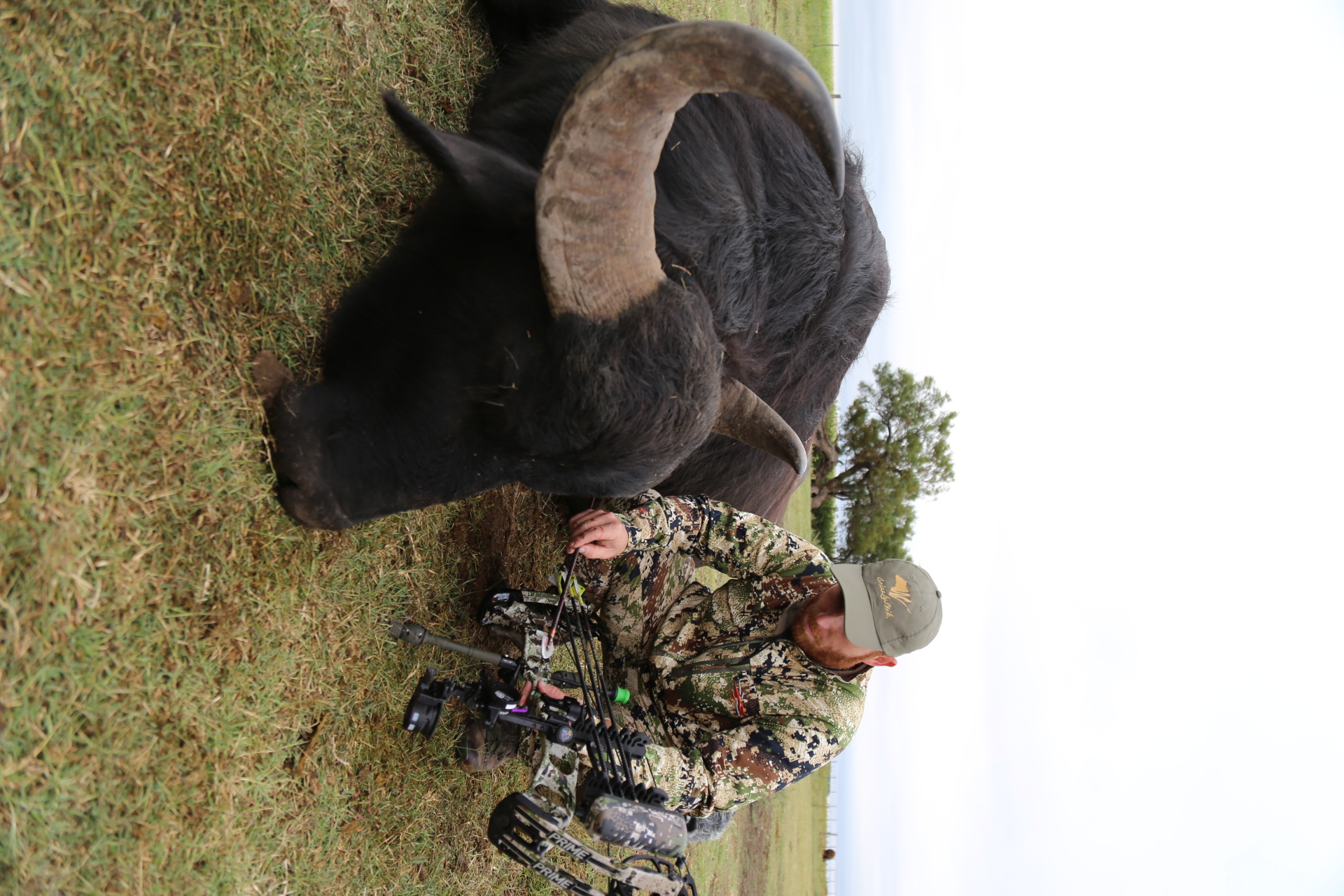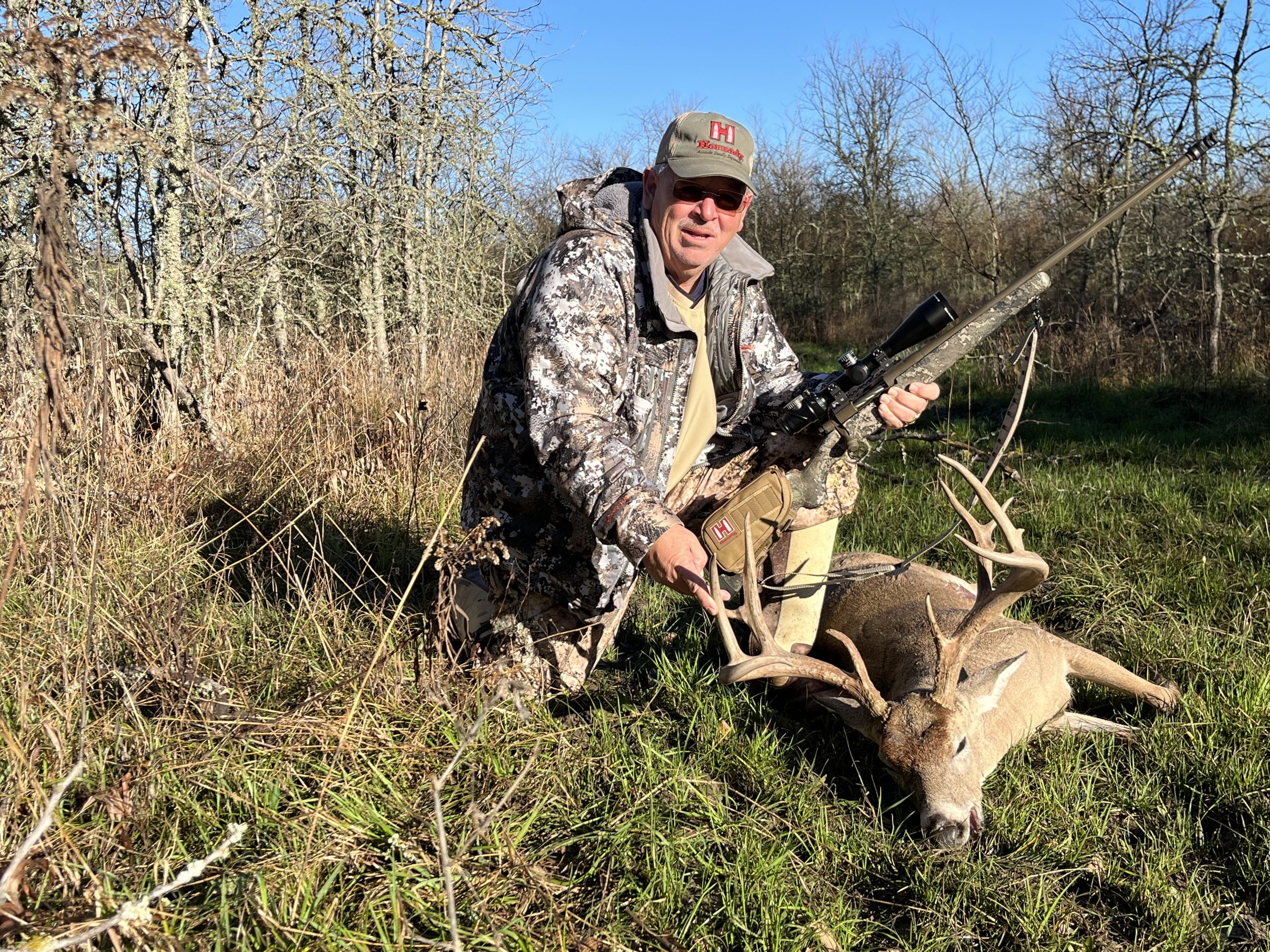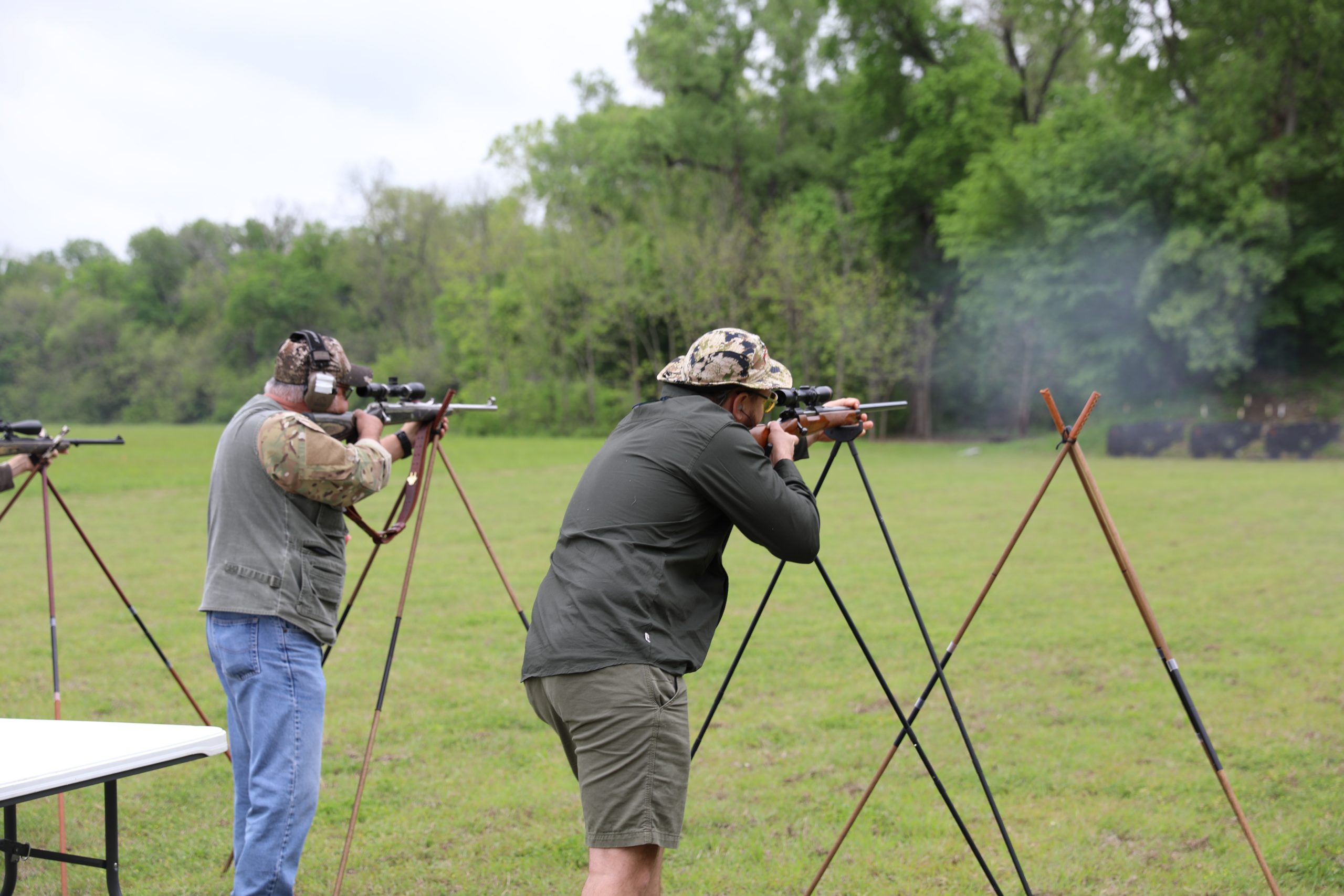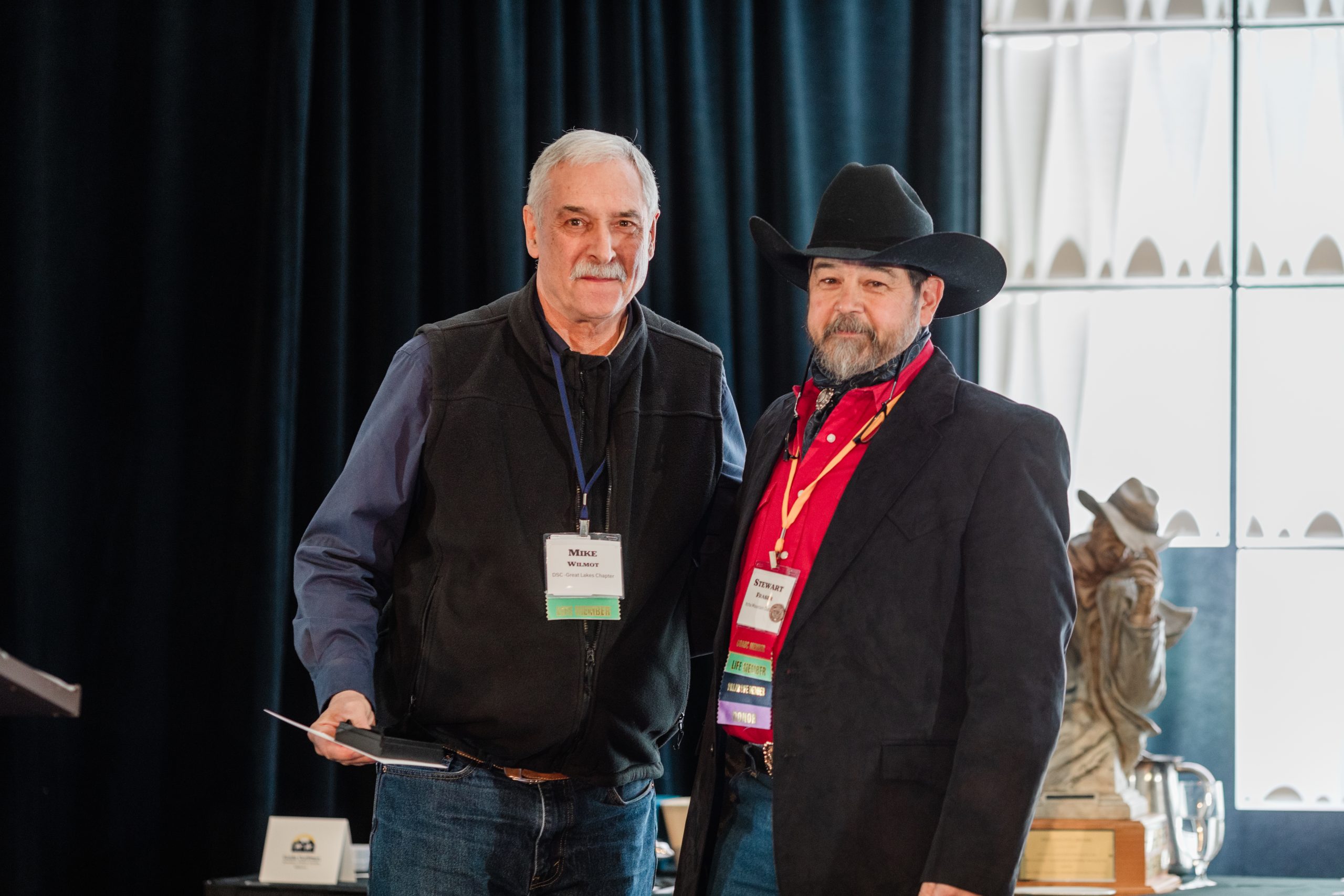Rethinking Arrow and Broadhead Performance
A NEW Series of Bowhunting Articles by the Ashby Bowhunting Foundation
Article 7: Factor 6 – Arrow Mass/Weight
Would you like to hunt with arrows and broadheads that give you pass-throughs on big game shot after shot? Would you like to have complete confidence in your arrows and broadheads to give you lethal penetration and reliable kills even if you hit bone? Of course, you would! Every serious bowhunter wants that kind of performance from their setup. Join us for Dr. Ed Ashby’s Top 12 Penetration Enhancement Factors.
After extensive testing, Dr. Ed Ashby identified twelve specific arrow penetration enhancement factors. He then ranked them in order of importance so that bowhunters would have a straightforward guide as to what they should build into their arrow and broadhead setups—and in what order—so they could create the most reliable and lethal setups possible.
To optimize your arrow and broadhead builds, it is recommended that you incorporate as many of the 12 Penetration Enhancement Factors as possible. The sixth factor, Arrow Mass or Weight, will be discussed today.
“When all else is equal–the same bow and the same external arrow dimensions–increasing arrow weight increases the average penetration you will achieve in tissues. That’s because it increases the arrow’s momentum, and arrow penetration in tissues is directly proportional to the change in momentum. Remember that momentum, by definition, is the measure of an arrows forward push.” Dr. Ed Ashby
If you have been on any online archery forums or groups in the last few years, it will be no surprise that arrow mass is a bit of a hot button topic. On one side you have those who push to achieve the fastest speeds—insinuating that if only you had this new bow that’s 2 feet per second faster than last year, it will solve all of your problems.
At the other end, you have those who hardly pay any attention to speed and focus purely on mass. This is true regardless of the equipment; whether you shoot a traditional bow, a compound, or even a crossbow, this discussion is occurring. The resulting debates can become heated, and it can be challenging to differentiate the opinions from the actual meaningful information when archers on both ends of the speed/mass spectrum are adamant that they are “right,” but as we have discussed on previous factors, is there a singular “right” answer?
To start, what does additional mass change? If you add 100 or 200 grains, what are you losing and what are you gaining?
As for what you lose, that’s the simple part. Your bow, whether traditional, compound, or crossbow, only has a set amount of energy stored based on your draw length and draw weight. Due to this, arrow speed must decrease as arrow mass increases. Yup, I said it, arrow speed will decrease, but as scary as that might be to some of you, there are some definite benefits gained if you are willing to give up a bit of speed.
The first tangible benefit that most people notice when making a jump in arrow mass is that their bow just seems quieter and calmer on the shot. Reduced noise levels and a lower tone can make a difference in animal reaction, but the biggest benefit for most people is mental. The shot process gets smoother and has a more controlled feeling, which means less twitchiness and more confidence down the road. This change is because as arrow mass increases, the string is slightly slowing down, which allows more time for energy to transfer from the bow to the arrow. The better the transfer, the less energy left wasted in the bow to create vibration and noise. The more efficient the transfer of energy from the bow to the arrow, the MORE ENERGY the arrow actually has at launch. Now, this additional energy is not substantial—on average we are only talking a few percentage points of increase—but the arrow is getting more energy transferred into it.
One thing to note is that this benefit is very dependent on the “base” efficiency of the bow. Longbows, recurves, old compounds, modern compounds, and crossbows can have drastically different efficiency at their rated speed. In recent years, there have been some great improvements in average efficiency and, due to this the efficiency, improvement from a heavier arrow may not be as noticeable. Even if there isn’t a large percent change in output kinetic energy for the latest models, there will still tend to be a noticeable difference in tone and feel as arrow mass increases. As bows continue to get more efficient in their design, the actual energy change will continue to get smaller, BUT it is impossible for increased weight to negatively impact a bow’s efficiency.
The next big benefit is that, even though your arrows energy will only be increasing slightly, its actual force (momentum) will be increasing at a much faster rate. This means there is more gas in the tank to continue pushing forward. Similar to a slingshot, the overall energy of your bow is essentially set, but the mass of the object will determine how much damage it can do. If you shoot a ping pong ball, there isn’t much concern for any damage, but if you shoot a golf ball out of the same slingshot it can cause significant damage. An example with an “average” compound bow is listed below. Even though we know that the kinetic energy will slowly increase, we have locked it in place for this example to highlight that the force still increases. Actual speeds and momentum values would be higher. The same holds true to any traditional bow or compound. If you have a known arrow weight and known arrow speed you can calculate the output kinetic energy and then use that value to create a similar chart as what is shown below.
340 IBO, 28.5”, 60lbs
KE=70.5 (Approximately)
300gr @ 325fps = 0.432 slug-ft. /s momentum
350gr @ 301fps = 0.467 slug-ft. /s momentum
400gr @ 282fps = 0.500 slug-ft. /s momentum
450gr @ 266fps = 0.531 slug-ft. /s momentum
500gr @ 252fps = 0.559 slug-ft. /s momentum
550gr @ 241fps = 0.588 slug-ft. /s momentum
600gr @ 230fps = 0.612 slug-ft. /s momentum
650gr @ 221fps = 0.637 slug-ft. /s momentum
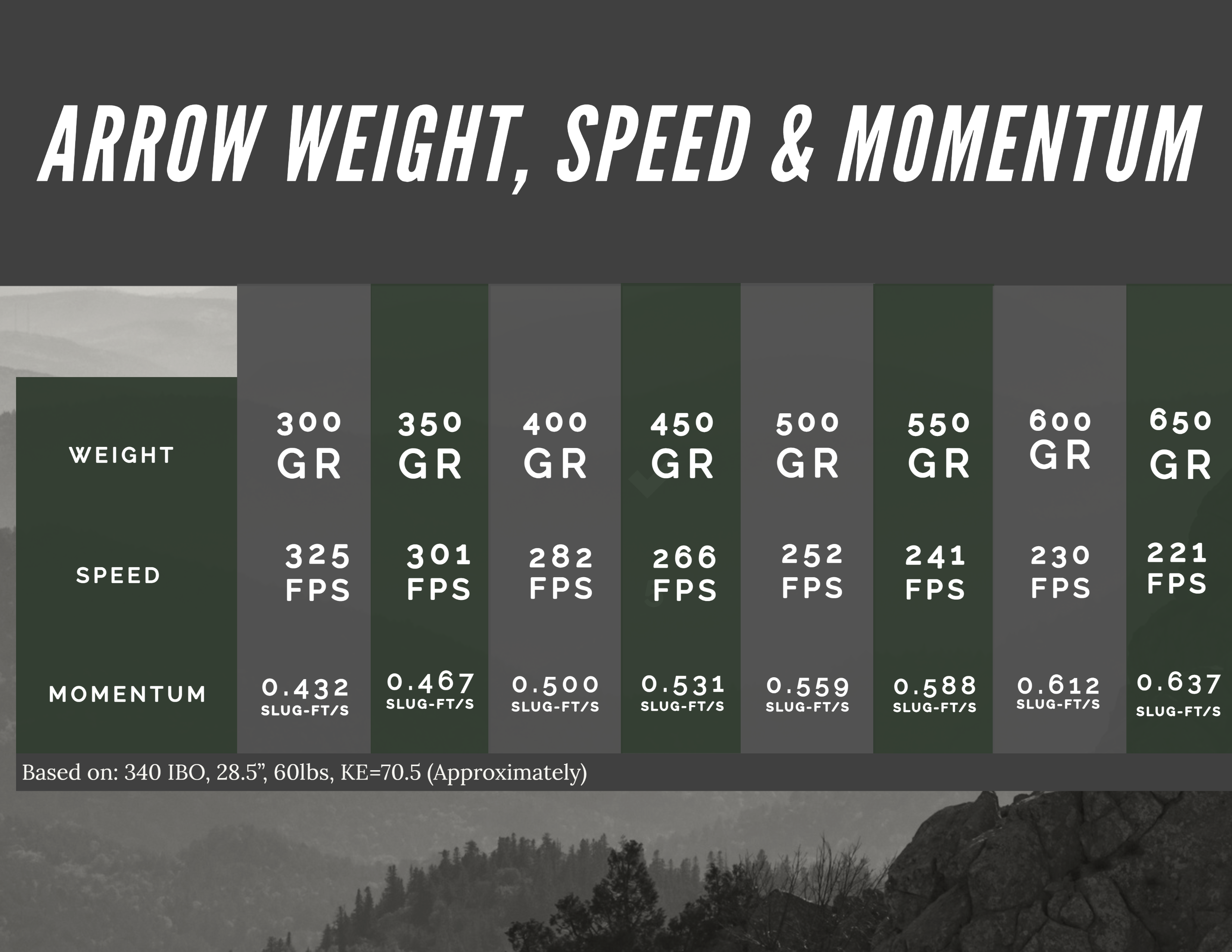
As you can see, going from the initial 300gr (5 grains per pound) arrow up to the 500gr shows an increase in force of nearly 30 percent! If you compare it to the 650gr then you would be approaching an increase of 50 percent! And these numbers aren’t even taking into account that the bow’s efficiency will be increasing, increasing the KE, and thus increasing the speeds as well as momentum values.
On top of the increase in force that mass gives us, it is also increasing our arrow’s inertia. Inertia is the resistance of an object to any change in its velocity. If the object is not moving, then it doesn’t want to move. If it is moving, then it will want to maintain that motion. How much the object resists any changes is directly related to its mass. This means that the heavier an object is, the harder it is to change what it is doing.
As archers, the things that we need to worry about changing our arrow’s velocity basically boil down to air (resistance/drag in flight) and then the animal itself (resistance/drag during penetration). So, the greater our arrow mass, the less speed loss we will see during the arrow’s flight. The less speed lost in flight, the greater the force at impact will be. This compounds on the force benefits noted earlier as all of the speeds noted were “at launch”. If we take into account losses during flight and actual force available at the moment of impact, things would spread even further apart. This same concept then carries over when the arrow is actually penetrating—meaning that it will take more resistance to slow the arrow down and actually stop forward progress. (If you want to dive into this further, Troy Fowler/Ranch Fairy, has a great video series testing this out and showcasing the results down range).
Another benefit that most don’t consider is broadhead flight. The faster that an arrow is flying, the more wind shear the broadhead creates—meaning it’s harder to control—and we already know how important flight quality is for penetration. This does not tend to be a significant concern for the traditional archers, but for compound and crossbow this is something to pay attention to. The larger the broadhead and the faster it is flying, the more critical all aspects of tuning and form will be. Slowing the arrow down a bit can be a simple solution to add some additional forgiveness and consistency to your setup even when you feel it’s already perfectly tuned.
Lastly, we need to keep in mind that speed plays a big role in the resistance encountered during penetration. If speed doubles, the resistance encountered quadruples. That is not a typo. If you break down the formula for resistance, that is how it boils down. So, an arrow flying at 150fps out of a traditional bow will encounter one-fourth of the resistance that an arrow flying at 300fps out of a modern compound will encounter. This is a big part of the confusion that surrounds energy, force, and arrow mass.
It’s easy to see someone having great performance with a certain arrow weight out of a traditional bow at slow speeds and think that same weight should perform even better out of a compound or crossbow. Shooting that same arrow at twice the speed will have a huge impact on overall energy and overall force, but that speed increase is also drastically increasingly the resistance. As you continue breaking it down, it becomes apparent that it’s not quite as simple as just shooting the same arrow faster. The main thing to remember though is that for YOUR bow, increasing arrow mass will decrease arrow speed resulting in decreased resistance, increased force, and increased inertia, which can lead to some big changes in performance.
At this point, I think you can see that the pro/con list is a bit unbalanced. Increasing the mass weight of your arrow…
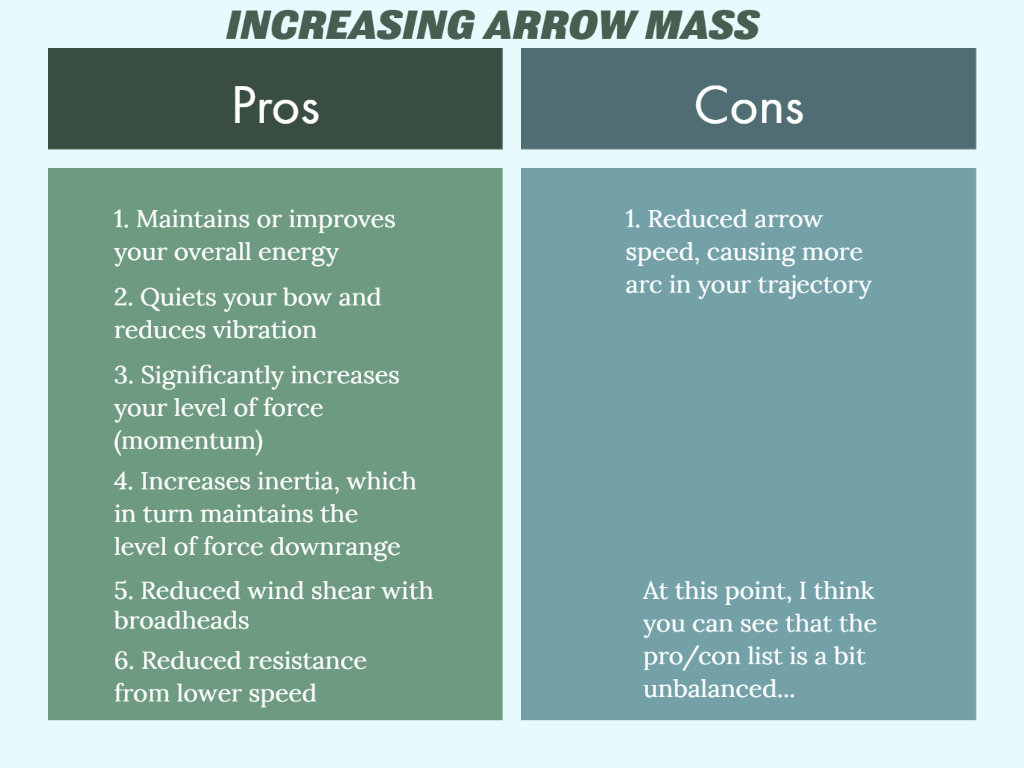
Pro:
- Maintains or improves your overall energy
- Quiets your bow and reduces vibration
- Significantly increases your level of force (momentum)
- Increases inertia, which in turn maintains the level of force downrange
- Reduced wind shear with broadheads
- Reduced resistance from lower speed
Con:
- Reduced arrow speed, causing more arc in your trajectory
Now, I do understand that speed is a bit of a weighted (pun intended) factor here, so let’s break it down a little as this is where many people tend to get hung up. If you go online and ask what an “acceptable” speed is, you will get a slew of answers and very little actual information to make a decision from. A better question would be what trajectory is acceptable, but it’s still challenging to really nail down.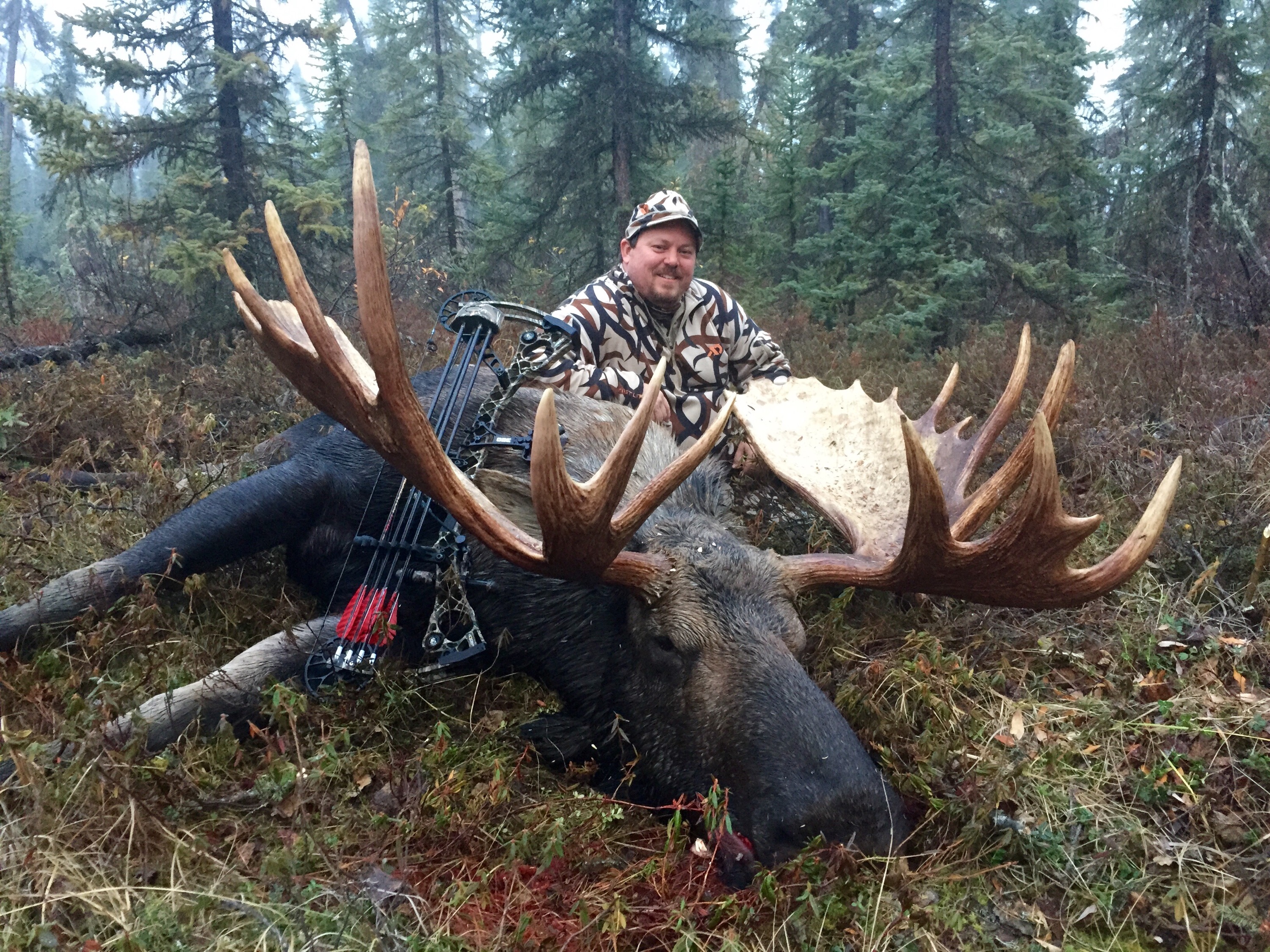
One person will say that at 220fps they could still achieve 90-plus yards on their sight tape, but someone else will say they can’t get past 60 yards if they go below 260fps. While both of these can be true, the piece everyone forgets about is the bow itself. You can easily take two different bows shooting the same arrow weight at the same speed and end up with drastically different pin gaps or tape spread. The actual trajectory will pretty much be the same, but the perceived trajectory based on the pins or tape will have the two shooters “seeing” drastically different results. This is due to differences in the sight geometry and most of it can be adjusted if desired to better fit your application.
Peep Height – Your anchor point will be the big factor in where your peep actually needs to be. This is not something I am recommending to change on a whim, but it is something to keep in mind when trying to understand your perceived trajectory. The higher the peep is from the shaft, the more range you will naturally have with your sight and the tighter the gaps/tape will be. This is due to the larger angle difference between your line of sight and the arrows launch angle. The closer the peep is to the shaft, the more in line the two angles become and the more space it takes to get to the next spot. Essentially someone who anchors on the bottom corner of their jaw will naturally have an advantage over someone who anchors up by their ear or cheek bone. Keep in mind that even though there is no peep, this still applies to both traditional and crossbows as well. For both traditional and crossbow the peep can be replaced by your eye. Depending on whether you shoot 3 under or split, and then exactly how you anchor, the distance from the shaft to your eye will be changing. Similarly, how you brace the crossbow stock, and the resulting scope height, will alter the distance from your eye to the bolt. The terms may change, but the concept is the same.
Peep to Pin – While peep height is not something that most people should consider changing, the peep to pin distance should be adjusted to maximize effectiveness for whatever task is at hand. If you look at shooters who compete in spots or 3D, you will notice that their scope—and thus their pins—tend to be mounted further out in front of the bow. This increases the peep to pin distance, which spreads out your gaps allowing for much finer precision and more forgiveness. This can be critical when one-sixteenth of an inch can be the difference in catching a line to win or losing the match. On the opposite end of the spectrum, as hunters we are less concerned about “catching a line” and more concerned about achieving a lethal hit on living game that can change distances in a hurry. Shortening the peep to pin distance will shrink your gaps, making it easier to adjust on the fly or split pins, while also giving you more max range for practice. Most sights on the market have multiple mounting holes that will allow a small range of adjustment, but dovetail sights offer the most adjustability for this. For traditional shooters this may or may not be applicable. If you are shooting instinctive then this really doesn’t apply as it will simply be a matter of practice and your brain learning the trajectory; however, for those using an aiming method, there is an adjustment that can be made. When aiming by referencing the tip of your point, lengthening or shortening the shaft changes the position of the tip, which alters your perceived adjustments the same as changing the position of a pin. A shorter shaft will reduce the perceived level of adjustment whereas a longer shaft will increase it. Unfortunately, this adjustment is not really applicable to crossbows as your full line of sight and reference is essentially contained within the scope.
These elements can create drastically different perceived trajectories depending on how they are combined. Until you understand where YOUR setup is, it can be extremely challenging to understand where you may be comfortable—or even what adjustments you may want to make—when it comes to speed and arrow weight. Arrow test packs and field point test packs work well for this as they tend to be budget friendly and can give you a wide range of total weights to shoot and actually see how they look out of your bow.
At the end of the day all of this really comes down to the type of change you are willing to make.
Maximizing your perceived trajectory and max range at a heavier weight may mean buying a different sight that allows you to make additional adjustments. It may mean putting in the time and effort to learn the new trajectory so that it becomes second nature. You may have different desired trajectory for different hunts, but the big question is how much of the benefits are you willing to sacrifice for that trajectory? Does it do any good to potentially increase your max range 20 yards if it means you are less confident the arrow will have enough force to be consistently lethal at that range?
There will always be a give and take, but there is a big difference between being able to hit the animal and being able to CONSISTENTLY achieve lethal penetration after impact. Even with all other penetration enhancing factors in place, some extra arrow weight goes a long way in assuring that your arrow delivers sufficient force at impact to provide lethal terminal performance. Simply put, it’s your insurance. Do you want full coverage, liability, or somewhere in between?
Below is a recommendation chart from our website. These are minimum weight recommendations, and you will notice that it is based on the animal and does not indicate different weights for various draw weight or draw lengths. This is intentional. The benefits we have discussed apply regardless of the bow type, draw weight, or draw length. If you would like more information, it can be found here https://www.ashbybowhunting.org/get-started
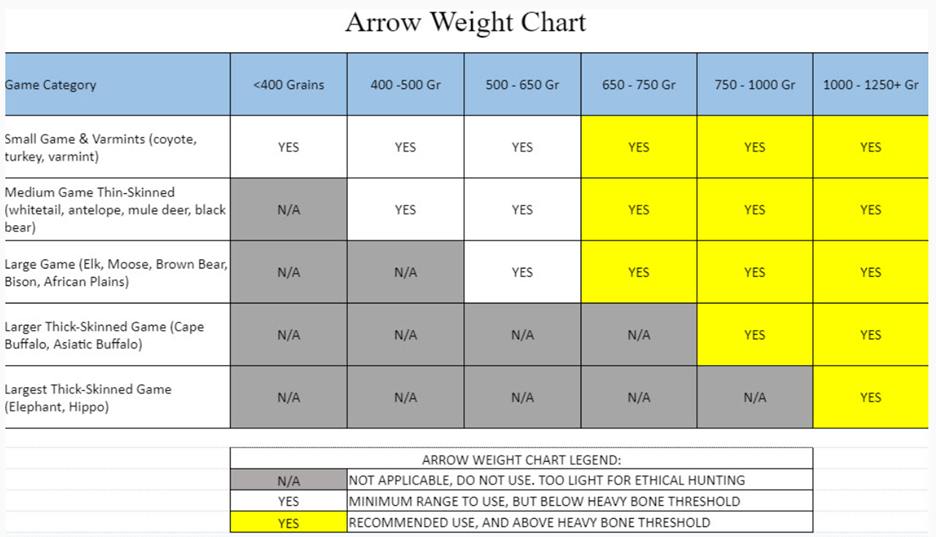
Get to know the authors!
[author] [author_image timthumb=’on’]https://www.biggame.org/wp-content/uploads/2021/06/dr-ed-ashby-bio-pic-002.jpg[/author_image] [author_info]Dr. Ed Ashby
Dr. Ed Ashby, a legend in the archery hunting community, dedicated more than 27 years to the study of arrow performance and broadhead lethality. His involvement in the historic Natal Study helped validate just how lethal archery equipment could be on all sized big game animals and was the main reason that bowhunting was ever legalized in South Africa. [/author_info] [/author]
[author] [author_image timthumb=’on’]https://www.biggame.org/wp-content/uploads/2021/06/rob-hummel-bio-pic-002.jpg[/author_image] [author_info] Rob Hummel
With a background in fabrication and engineering, the current standard being pushed by the industry didn’t feel right when Rob first entered the world of archery. Fortunately, after being directed to some of the reports from Dr. Ed Ashby’s field research it all began to align with the mechanics he already understood. Over the last decade, Rob has continued pushing to bring consistent lethality to the forefront of the archery industry. [/author_info] [/author]
[author] [author_image timthumb=’on’]https://www.biggame.org/wp-content/uploads/2021/06/todd-michael-smith-bio-pic-002.jpg[/author_image] [author_info] Todd Smith
For over 40-years, his passion for bowhunting and thirst for knowledge and understanding have driven Todd to learn everything he could about arrows, broadheads, and arrow lethality. Todd is an author, public speaker, and has helped to educate tens of thousands of bowhunters on how to set themselves up for bowhunting successes by using proven – lethal – arrow and broadhead set-ups.[/author_info] [/author]

[box] What’s the Ashby Bowhunting Foundation all about?
The Ashby Bowhunting Foundation is dedicated to continuing Dr. Ed Ashby’s research and to ensuring that bowhunters everywhere will have free access to information that will help them build extremely lethal and reliable arrow and broadhead setups for all species of big game. The foundation was started in 2017 to continue the work of Dr. Ed Ashby that has benefited bowhunters worldwide for decades. The Foundation’s goal is to provide information to achieve the highest possible success rate and reduce the wound/non-recovery rate of big game to the lowest level possible. Through a program of continuing research, the Foundation seeks to find the most lethal arrow setups, taking into account all possible hits under real hunting conditions, controlled testing and using freshly culled animals. The results of this testing is always made available to the global bowhunting community free of cost, utilizing multi-media outlets for information and test results. The Ashby Bowhunting Foundation is excited for this opportunity to partner with DSC and to share these articles with all DSC members so they can make informed decisions of whether to change to arrow and broadhead combinations that will increase their odds of bowhunting success under all situations and conditions. For more information please visit: https://www.biggame.org/ashby-bowhunting-foundation [/box]

